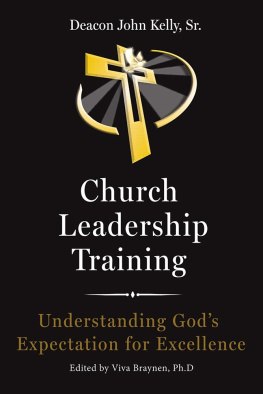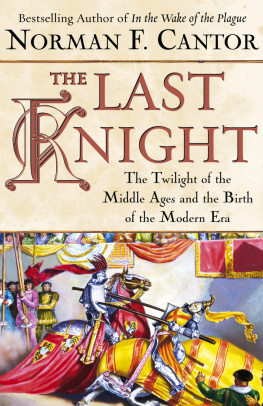
F OR S UZANNE , J ONATHAN, AND S OFIYA
TO A FUTURE WITHOUT PLAGUE
Contents

T HIS BOOK BEGAN AS AN INQUIRY INTO THE FUTURE AND ENDED as an investigation of the past.
Five years ago, when I first began thinking about writing a book on the plague, I had in mind plague in the generic sense of a major outbreak of epidemic disease, and I was looking ahead to the twenty-first century, not backward toward the fourteenth. From an earlier book on experimental medicine, Three on the Edge: The Story of Ordinary Families in Search of a Medical Miracle, I had gotten a glimpse of the power of unfettered pandemic disease. One of the people I wrote about was an AIDS patient. During the two years I followed him in the early 1990sa time when effective HIV treatments were rarethe man lost a former lover, three friends, and a colleague at work. A hallmark of pandemic disease is its ability to destroy worlds, not just individuals, but it was one thing to know that, quite another to witness it.
In 1995, the year I finished the book, Jonathan Mann, a professor at the Harvard University School of Public Health, warned that AIDS was the beginning of a frightening new era. The history of our time will be marked by recurrent eruptions of newly discovered diseases, he predicted. Two years later, 1997, the New England Journal of Medicine issued a similar warning when a virulent new strain of bubonic plague was identified. The finding of multi-drug-resistant [strain of plague] reinforces the concern... that the threat from emerging infectious diseases is not to be taken lightly, declared the Journal. Scarcely twenty years after the eradication of smallpox in 1979, an accomplishment widely described in the media as humanitys ultimate triumph over infectious disease, we seemed to be slipping back into the world of our ancestors, a world of sudden, swift, and uncontrollable outbreaks of epidemic illness. The book I was thinking about would explore the nature of this threat, and in particular the danger posed by newly emerging illnesses such as Ebola fever, Marburg disease, hantavirus pulmonary syndrome, SARS, and avian flu.
The book I ended up writing is quite different, though, indirectly, it rehearses many of the same themes. Its subject is an outbreak of a particular infectious disease in a particular time and place. Seven hundred years after the fact, what we call the Black Deathand what medieval Europeans called the Great Mortality, and medieval Muslims, the Year of Annihilationremains the greatest natural disaster in human history.
Apocalyptic in scale, the Black Death affected every part of Eurasia, from the bustling ports along the China Sea to the sleepy fishing villages of coastal Portugal, and it produced suffering and death on a scale that, even after two world wars and twenty-seven million AIDS deaths worldwide, remains astonishing. In Europe, where the most complete figures are available, in many places the plague claimed a third of the population; in others, half the population; and in a few regions, 60 percent. The affliction was not limited to humans. For a brief moment in the middle of the fourteenth century, the words of Genesis 7All flesh died that moved upon the earthseemed about to be realized. There are accounts of dogs, cats, birds, camels, even of lions being afflicted by the boil, the telltale bubo of bubonic plague. By the time the pestilence ended, vast stretches of the inhabited world had fallen silent, except for the sound of the wind rustling through empty, overgrown fields.
What led me from the book I planned to the book I wrote was an encounter with the literature of the Black Death. Before plunging into a book about the future of epidemic disease, I wanted to acquaint myself with its past, and the medieval plague, as the most famous example of the phenomenon, seemed the appropriate place to start. Thus, in the autumn of 2000 I began shuttling between the main reading room of the New York Public Library and Butler Library at Columbia University. I read a number of excellent academic histories, but it was the original source material, the literature of the Great Mortalitythe chronicles, letters, and reminiscences written by contemporariesthat turned my gaze from the future to the past. I had approached this material with some trepidation. If, as an English writer once observed, the past is a foreign country, no part of the past seems more foreign, more otherly, to a modern sensibility than the Middle Ages.
My wariness proved unwarranted. Much has changed since the 1340s, the decade the Black Death arrived in Europe, but not human nature. The plague generation wrote about their experiences with a directness and urgency that, seven hundred years after the fact, retains the power to move, astonish, and haunt. After watching packs of wild dogs paw at the newly dug graves of the plague dead, a part-time tax collector in Siena wrote, This is the end of the world. His contemporaries provided vivid descriptions of what the end of the world looked like, circa 1348 and 1349. It was corpses packed like lasagna in municipal plague pits, collection carts winding through early-morning streets to pick up the previous days dead, husbands abandoning dying wives and parents abandoning dying childrenfor fear of contagionand knots of people crouched over latrines and sewers inhaling the noxious fumes in hopes of inoculating themselves against the plague. It was dusty roads packed with panicked refugees, ghost ships crewed by corpses, and a feral child running wild in a deserted mountain village. For a moment in the middle of the fourteenth century, millions of people across Eurasia began to contemplate the end of civilization, and with it perhaps the end of the human race.
The medieval plague was one of the seminal events of the past millennium. It cast a deep shadow across the centuries that followed, and it remains part of the collective memory of the West. In discussions of AIDS and other emerging infectious diseases, the Black Death is constantly evoked as a warning from the past, something humanity must avoid at all costs. Yet, as a historical event, the medieval plague remains little known. It originated in inner Asia, somewhere in the still-remote region between Mongolia and Kirgizia, and might well have remained there, had not the Mongols unified much of Eurasia in the thirteenth century, thereby facilitating the growth of three activities that continue to play an important role in the spread of infectious disease: trade, travel, and larger and more efficient communications. In the Mongols case, the improvement in communication was the Yam, the Tartar version of the pony express. From inner Asia, one prong of the plague swept eastward into China, another westward across the steppe into Russia. Sometime in the mid-1340s the western wing reached Italian trading outposts in Crimea; from there, fleeing sailors carried the disease to Europe and the Middle East.
Despite the enormous size of Eurasia and the slowness of medieval travelin 1345 it took eight to twelve months to travel from the Crimea to China overlandthe plague spread to almost every corner of the continent within a matter of decades. It seems to have erupted in inner Asia sometime in the first quarter of the fourteenth century, and by the autumn of 1347 it was in Europe. In late September Sicily was infected by a fleet of Genoese galleys. One chronicler reported that the Genoese tumbled off the infected ships with sickness clinging to their very bones. From Sicily the pestilence moved swiftly northward to continental Europe. By March of 1348 much of central and northern Italy was or soon would be infected, including Genoa, Florence, and Venice, where gondolas slipped through wintery canals to collect the dead; by spring the plague was in Spain, southern France, and the Balkans, where one contemporary reports that packs of wolves came down from the hills to attack the living and feed on the dead. By summer the disease had reached northern France, England, and Ireland, where it took a great toll among the English in port towns like Dublin, but left the native Irish in the hills relatively unscathed. By the late autumn of 1348 the plague was in Austria and menacing Germany, and by 1349 and 1350 it had infected the regions along the European periphery: Scotland, Scandinavia, Poland, and Portugal. In a century when nothing moved faster than the fastest horse, the Black Death had circumnavigated Europe in a little less than four years.
Next page













